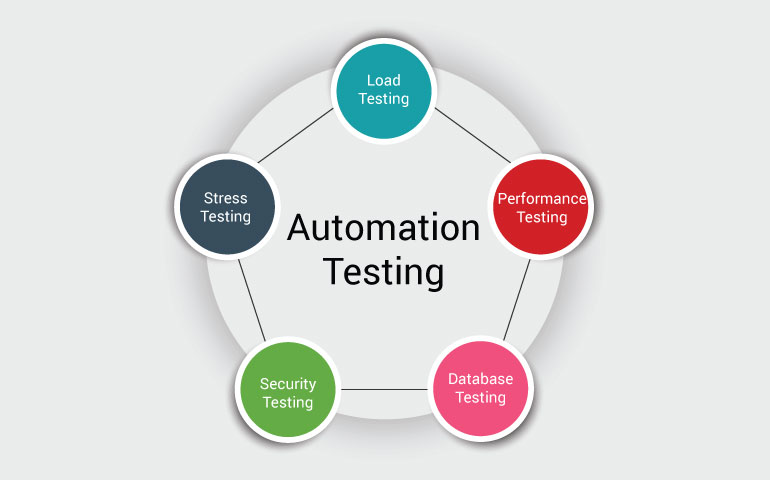Grasping Automation Testing: Devices, Strategies, and Benefits
Guaranteeing Success in Automation Checking: Key Metrics, Difficulties, and Solutions Every QA Team Need To Know
In the world of software high quality assurance, the landscape of automation screening is ever-evolving, demanding a meticulous strategy to guarantee seamless procedures. Trick metrics act as the compass directing QA groups via the large surface of test automation, dropping light on progress and areas for improvement. Difficulties loom big, often casting darkness on the course to success. By understanding these hurdles and applying reliable options, QA groups can navigate with intricacies with finesse. The journey to grasping automation screening is paved with nuances that require an eager eye for surveillance, evaluation, and constant improvement. automation testing. As the sector thrusts ahead, the quest for optimum performance in automation screening continues to be a continuous pursuit, urging QA teams to equip themselves with the knowledge and techniques essential for triumph.
Significance of Secret Metrics
Recognizing the value of key metrics is crucial for assessing the efficiency and efficiency of automation testing procedures. Secret metrics work as measurable steps that supply beneficial understandings into numerous facets of the testing process, such as examination protection, examination execution time, problem thickness, and test case performance. By evaluating these metrics, QA groups can determine bottlenecks, inefficiencies, and areas for improvement within their automation testing framework.
One important element of vital metrics is their capacity to track progress and keep an eye on the general health of the testing procedure (automation testing). They allow stakeholders to make enlightened decisions based upon data-driven insights, which can result in a lot more reliable testing approaches and far better resource allowance. Furthermore, crucial metrics can help groups established sensible objectives, gauge the success of automation initiatives, and demonstrate the ROI of automation testing initiatives
Usual Difficulties Dealt With
Difficulties typically experienced in automation testing processes can significantly influence the total efficiency and performance of QA teams. Automation testing may not cover all facets of testing, such as use and customer experience testing, which still require manual treatment. Conquering these obstacles requires correct preparation, critical examination instance choice, robust maintenance procedures, sufficient resources, and a clear understanding of the constraints of automation testing.
Reliable Solutions for Challenges
To resolve the obstacles run into in automation screening, implementing effective remedies is vital for enhancing the efficiency and efficiency of QA groups. One crucial option is to spend in durable training programs for QA groups to guarantee they have the necessary abilities to successfully use automation tools. Training can bridge expertise gaps, boost understanding of automation structures, and improve scripting capabilities, ultimately resulting in much more reliable test development and execution.
One more vital service is to develop clear interaction channels within the QA team and with various other stakeholders, such as programmers and task managers. Efficient communication aids in straightening expectations, sharing progression updates, and quickly addressing problems or obstructions that may develop throughout the automation testing process.

Surveillance and Evaluation Techniques
Implementing effective monitoring and evaluation methods is important for guaranteeing the success and effectiveness of automation screening processes. By using monitoring devices, QA teams can track the efficiency of examination scripts, determine traffic jams, and identify locations for renovation. Real-time monitoring permits fast detection of issues, enabling rapid response and resolution. In addition, evaluating test outcomes and metrics gives useful understandings right into the quality of the software program being view publisher site checked and the efficiency of the screening technique.
One trick technique in surveillance and evaluation is the usage of dashboards that settle pertinent metrics and KPIs in an aesthetically easily accessible format. These dashboards provide an extensive overview of examination implementation standing, test insurance coverage, defect patterns, and other essential information. Routinely examining and analyzing these dashboards can assist QA teams make informed decisions, focus on jobs, and maximize screening efforts.
Moreover, carrying out automated informs and alerts based on predefined thresholds can enhance proactive monitoring and prompt intervention. By setting up informs for performance inconsistencies or test failings, teams can resolve issues without delay and prevent them from escalating. Generally, monitoring and analysis techniques play an important function in ensuring the effectiveness and success of automation screening initiatives.
Continual Renovation Techniques
Enhancing the efficacy of automation screening processes necessitates the regular improvement of methodologies and methods. Constant enhancement strategies are pivotal for QA teams to adjust to progressing modern technologies and provide top quality software. One essential technique to enhancing automation screening procedures is to carry out routine evaluations and retrospectives. By evaluating previous testing cycles, groups can identify traffic jams, inadequacies, and areas for improvement. Implementing responses loops and integrating lessons learned right into future screening frameworks can generate considerable renovations over time.

Final Thought
In verdict, it is critical for QA teams to comprehend the key metrics, challenges, and options in automation screening to make certain success. By carefully monitoring and analyzing information, carrying out effective services to usual difficulties, and continually boosting methods, QA groups can maximize their screening procedures and supply high-grade software. Sticking to these practices will ultimately lead to more efficient and efficient automation screening practices.
By analyzing these metrics, QA teams can recognize traffic jams, ineffectiveness, and areas for enhancement within their automation testing framework.
Additionally, vital metrics can assist groups established realistic objectives, determine the success of automation initiatives, and show the ROI of automation screening initiatives.
Challenges typically experienced in automation testing processes can dramatically impact the total performance and performance of QA groups. Automation testing may not cover all elements of testing, such as use and individual experience screening, which still need manual intervention.In conclusion, it is vital for QA teams to recognize the vital metrics, obstacles, and remedies in automation testing to make sure success.